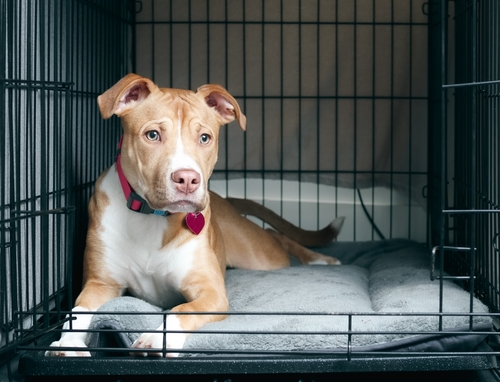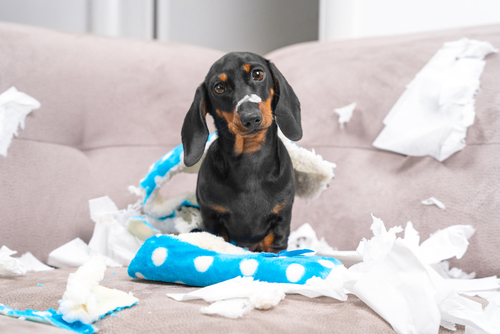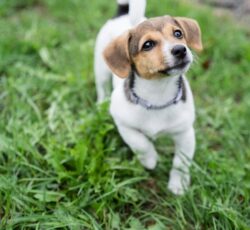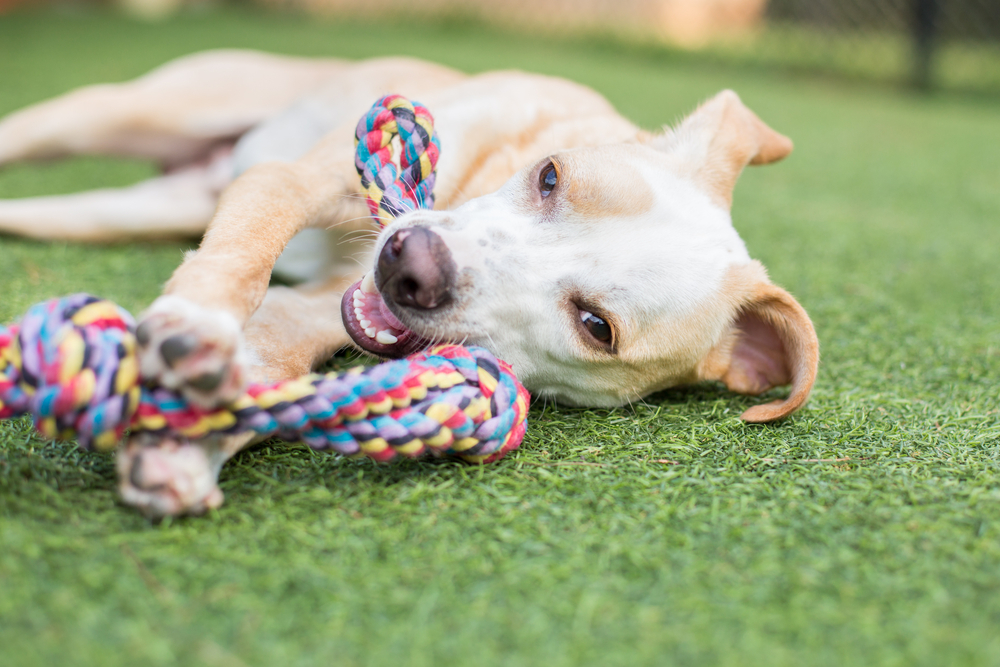
Crate training is an effective method for housebreaking and establishing routine with your new puppy. Not only does it provide them with a safe and comfortable space, but it also helps prevent accidents and destructive behavior during the night. However, introducing crate training to your puppy can sometimes be challenging, especially at night when they may feel anxious or lonely. In this blog post, we will explore some tips to help you successfully crate train your puppy at night.
1. Choose the Right Crate:
The first step in crate training your puppy at night is selecting an appropriate crate. Ensure that the crate is large enough for your puppy to stand up, turn around, and lie down comfortably. However, it should not be too large that they can use one side as a bathroom area. Opt for a crate with a secure and sturdy construction to prevent any escape attempts. Additionally, consider placing soft bedding or a familiar item with your scent in the crate to make it more inviting and comforting for your puppy.
2. Gradually Introduce Your Puppy to the Crate:
It is essential to introduce the crate slowly to your puppy and create positive associations with it. Start by placing treats or their favorite toys near the crate to encourage exploration. As they become more comfortable, place treats inside the crate, allowing them to enter on their own. Avoid forcing your puppy into the crate, as this can create a negative association with it. Gradually build up their time spent in the crate, initially starting with short periods, and gradually increasing the duration.
3. Make the Crate a Positive and Comfortable Space:
To help your puppy adjust to the crate at night, make it a positive and comfortable space. Place the crate in an area where your puppy can still see and hear you, such as your bedroom. This helps alleviate any anxiety or loneliness they may experience during the night. Use soft bedding or a crate pad to make it cozy and inviting. Consider covering the crate with a light blanket to create a den-like environment, providing a sense of security for your puppy.
4. Establish a Bedtime Routine:
Establishing a bedtime routine for your puppy can help facilitate the crate training process. Dogs are creatures of habit, and a consistent routine can provide them with a sense of security. Create a routine that involves a specific time for taking your puppy out for a bathroom break, followed by some playtime or a calming activity before bedtime. By incorporating the crate into this routine, your puppy will begin to associate it with relaxation and sleep.
5. Use Positive Reinforcement:
Positive reinforcement is a powerful tool when crate training your puppy at night. Reward your puppy with praise, treats, or a favorite toy when they willingly enter and settle in the crate. Make sure to provide positive reinforcement immediately after they exhibit the desired behavior, reinforcing the connection between their actions and the rewards. This positive association will encourage your puppy to view the crate as a positive and comfortable space.
6. Address Whining or Anxiety:
It is common for puppies to experience some level of anxiety or whining during the initial stages of crate training at night. This is their way of expressing their discomfort or needing attention. It is important not to give in to their demands or let them out of the crate when they whine, as it can reinforce the behavior. Instead, try redirecting their attention by offering a soothing toy or a stuffed Kong filled with treats. Be patient and consistent, as puppies typically adjust to the crate over time.
7. Be Patient and Consistent:
Like any training process, crate training your puppy at night requires patience and consistency. It may take time for your puppy to adjust and feel comfortable in the crate during the night. Stay consistent with the routine, reward positive behaviors, and refrain from letting your puppy out of the crate when they whine or bark. With time and consistent training, your puppy will learn to associate the crate with security and restful sleep.
Summary
Crate training your puppy at night can be a beneficial process for both you and your furry friend. By selecting the right crate, gradually introducing your puppy to it, making the crate a positive space, establishing a bedtime routine, using positive reinforcement, addressing any whining or anxiety, and maintaining patience and consistency, you can successfully crate train your puppy at night. Remember, the key to successful crate training is to create a safe and comfortable space that promotes a sense of security and routine for your puppy.
Need Dog Services in Bee Cave, TX?
At Just Four Paws, Inc., we understand that your furry friends are more than just pets – they are cherished members of your family. That’s why we are committed to providing the best possible care for them during their stay with us. Our pet boarding services offer a safe and comfortable environment where your pets will receive individual attention and plenty of playtime. Additionally, our expert groomers are dedicated to pampering your pets and ensuring they look and feel their best. Trust Just Four Paws, Inc. with your pets’ needs and give them the love and care they deserve. Contact us today to learn more about what we can do for you!

Dealing with a disobedient dog can be challenging and frustrating for pet owners. Whether your furry friend is stubborn, overly energetic, or simply unresponsive to commands, effective training is essential for fostering a harmonious relationship. In this guide, we’ll explore practical strategies and techniques to transform your disobedient dog into a well-behaved companion.
Understanding the Root Cause
Before embarking on the training journey, it’s crucial to understand the root cause of your dog’s disobedience. Dogs may act out due to boredom, anxiety, fear, or a lack of clear communication. Identifying the underlying issues will help tailor your training approach to address specific behavioral problems.
Consistency is Key
Consistency is the cornerstone of successful dog training. Dogs thrive on routine and predictability, so it’s vital to establish consistent rules and expectations. Ensure that all family members are on the same page regarding commands, rewards, and consequences. A united front will prevent confusion and reinforce positive behaviors more effectively.
Positive Reinforcement
One of the most effective training methods is positive reinforcement. Instead of focusing on punishment for bad behavior, reward your dog when they exhibit desired actions. Use treats, praise, and affection to reinforce good behavior, creating a positive association with following commands. This approach not only motivates your dog but also strengthens the bond between you and your furry companion.
Patience and Understanding
Training a disobedient dog requires patience and understanding. Dogs, like humans, can’t change overnight, and it’s essential to acknowledge that learning takes time. Avoid frustration and anger, as these emotions can hinder the training process. Celebrate small victories and be patient when setbacks occur. Consistent, positive interactions will yield better long-term results than punitive measures.
Basic Obedience Commands
Start with basic obedience commands like sit, stay, and come. These fundamental commands lay the foundation for more advanced training and contribute to better control over your dog’s behavior. Use treats and praise generously when your dog follows commands correctly, reinforcing the positive association with obedience.
Socialization
Socialization is a critical aspect of training, especially for disobedient dogs that may exhibit fear or aggression towards other dogs or people. Expose your dog to various environments, people, and animals to help them become comfortable and confident in different situations. Controlled interactions in a safe setting will gradually reduce anxiety and improve their overall behavior.
Exercise and Mental Stimulation
Many disobedient behaviors stem from excess energy and boredom. Regular exercise and mental stimulation are essential for keeping your dog physically and mentally healthy. Engage in activities such as walks, playtime, and puzzle toys to channel their energy in a positive direction. A tired dog is more likely to be receptive to training and less prone to destructive behaviors.
Redirecting Undesirable Behaviors
Instead of punishing undesirable behaviors, redirect your dog’s attention to more appropriate actions. For example, if your dog is prone to chewing on furniture, provide them with a designated chew toy and praise them when they use it. Redirecting their focus reinforces the idea that certain behaviors are unacceptable while offering a suitable alternative.
Professional Training Assistance
In some cases, seeking professional assistance from a dog trainer or behaviorist may be necessary. Professional trainers have experience working with a variety of behavioral issues and can provide personalized guidance based on your dog’s specific needs. They can also offer valuable insights into your own behavior and interactions with your dog, contributing to a more effective training process.
Summary
Training a disobedient dog requires time, patience, and a positive approach. By understanding the root cause of their behavior, maintaining consistency, and employing positive reinforcement, you can transform your furry friend into a well-behaved companion. Remember, the journey to a well-trained dog is a gradual process, and each small success brings you closer to a harmonious and fulfilling relationship with your canine companion.
Need Dog Services in Bee Cave, TX?
At Just Four Paws, Inc., we understand that your furry friends are more than just pets – they are cherished members of your family. That’s why we are committed to providing the best possible care for them during their stay with us. Our pet boarding services offer a safe and comfortable environment where your pets will receive individual attention and plenty of playtime. Additionally, our expert groomers are dedicated to pampering your pets and ensuring they look and feel their best. Trust Just Four Paws, Inc. with your pets’ needs and give them the love and care they deserve. Contact us today to learn more about what we can do for you!
 Bringing home a new puppy is an exciting and joyful experience. However, it comes with the responsibility of training your furry friend. Proper training is essential to ensure your puppy grows into a well-behaved and happy dog. In this blog post, we will provide a comprehensive guide to new puppy training, covering important aspects such as crate training, housebreaking, basic commands, and socialization.
Bringing home a new puppy is an exciting and joyful experience. However, it comes with the responsibility of training your furry friend. Proper training is essential to ensure your puppy grows into a well-behaved and happy dog. In this blog post, we will provide a comprehensive guide to new puppy training, covering important aspects such as crate training, housebreaking, basic commands, and socialization.
Crate Training
Crate training is an important aspect of puppy training as it provides a safe and comfortable space for your puppy and helps with establishing a routine. Start by choosing an appropriate crate size that allows your puppy to stand, turn around, and lie down comfortably. Introduce your puppy to the crate gradually, using positive reinforcement such as treats and praise. Encourage your puppy to enter the crate willingly, and gradually increase the time spent inside. Ensure the crate is associated with positive experiences, such as feeding and nap times. Crate training helps with housebreaking and prevents destructive behaviors when you’re unable to supervise your puppy.
Housebreaking
Housebreaking, or potty training, is a crucial part of new puppy training. Consistency and patience are key to successful housebreaking. Establish a regular schedule for feeding, and take your puppy outside to eliminate shortly after meals. Choose a specific spot for outdoor potty breaks, and always reward your puppy with treats and praise when they go in the appropriate place. Keep an eye on your puppy’s behavior and take them outside whenever you notice signs of needing to eliminate, such as sniffing or circling. Accidents will happen, but remain patient and avoid punishment. Positive reinforcement and consistency will help your puppy associate outdoor elimination with rewards, encouraging good habits.
Basic Commands
Teaching your puppy basic commands not only establishes a line of communication but also helps with behavior management and safety. Start with simple commands like “sit,” “stay,” and “come.” Use positive reinforcement, rewards, and repetition when introducing these commands. For example, when teaching “sit,” hold a treat above your puppy’s head and slowly move it back. Your puppy will naturally sit down to follow the treat and receive praise and a reward. Practice these commands in various settings and gradually increase distractions. Remember to keep training sessions short and fun, ending on a positive note. Consistency and patience are key when teaching basic commands, and with time, your puppy will learn to respond reliably.
Socialization
Socialization is an essential aspect of new puppy training as it helps your puppy become well-adjusted and comfortable in various environments and social situations. Introduce your puppy to different people, animals, sounds, and environments from an early age. Arrange playdates with other puppies or well-behaved adult dogs to help your puppy learn appropriate social skills. Gradually expose your puppy to new experiences, such as car rides, walks in busy areas, and interacting with different people. Ensure these experiences are positive and reward your puppy for calm and confident behavior. Socialization is an ongoing process that should continue throughout your puppy’s life to prevent fear or aggression towards unfamiliar situations.
Preventing Destructive Behaviors
Puppies are naturally curious and may engage in destructive behaviors, such as chewing on furniture, shoes, or other household items. To prevent these behaviors, provide appropriate chew toys and teach your puppy what is acceptable to chew on. Whenever you catch your puppy chewing on something inappropriate, redirect their attention to a chew toy and provide praise when they engage with it. Puppy-proofing your home is also important to prevent access to hazardous or valuable items. Crate training can be helpful when you’re unable to supervise your puppy. Remember, patience and consistency are key in preventing destructive behaviors, and positive reinforcement will encourage your puppy to make the right choices.
Obedience Classes and Professional Training
Consider enrolling your puppy in obedience classes or seeking professional dog training to enhance your training efforts. Obedience classes provide structured learning environments and socialization opportunities for both you and your puppy. Trained instructors can guide you through training techniques and address specific behavior challenges. Professional trainers can also provide personalized training sessions tailored to your puppy’s specific needs. Their expertise can help address any behavioral issues and ensure that your puppy receives the best training possible.
Conclusion
New puppy training is an important responsibility that sets the foundation for a well-behaved and happy dog. Crate training, housebreaking, teaching basic commands, socialization, and preventing destructive behaviors are all essential aspects of training a new puppy. With consistency, patience, and positive reinforcement, you can establish good habits and create a strong bond with your furry friend. Consider enrolling in obedience classes or seeking professional training to enhance your training efforts. Remember, the key to successful training is to make it a positive and enjoyable experience for both you and your puppy.
Got Questions? Let Us Help!
At Just Four Paws, Inc., we understand that your furry friends are more than just pets – they are cherished members of your family. That’s why we are committed to providing the best possible care for them during their stay with us. Our pet boarding services offer a safe and comfortable environment where your pets will receive individual attention and plenty of playtime. Additionally, our expert groomers are dedicated to pampering your pets and ensuring they look and feel their best. Trust Just Four Paws, Inc. with your pets’ needs and give them the love and care they deserve. Contact us today to learn more about what we can do for you!




 Bringing home a new puppy is an exciting and joyful experience. However, it comes with the responsibility of training your furry friend. Proper training is essential to ensure your puppy grows into a well-behaved and happy dog. In this blog post, we will provide a comprehensive guide to new puppy training, covering important aspects such as crate training, housebreaking, basic commands, and socialization.
Bringing home a new puppy is an exciting and joyful experience. However, it comes with the responsibility of training your furry friend. Proper training is essential to ensure your puppy grows into a well-behaved and happy dog. In this blog post, we will provide a comprehensive guide to new puppy training, covering important aspects such as crate training, housebreaking, basic commands, and socialization.